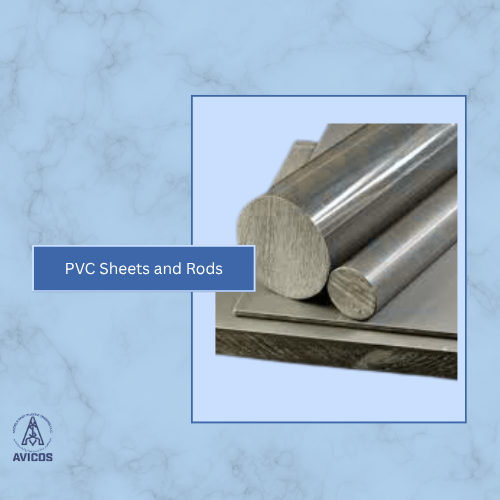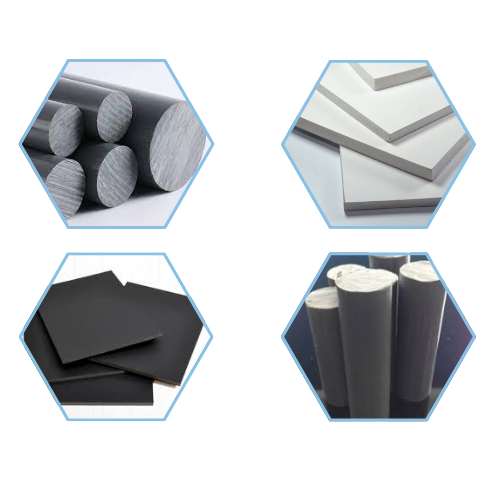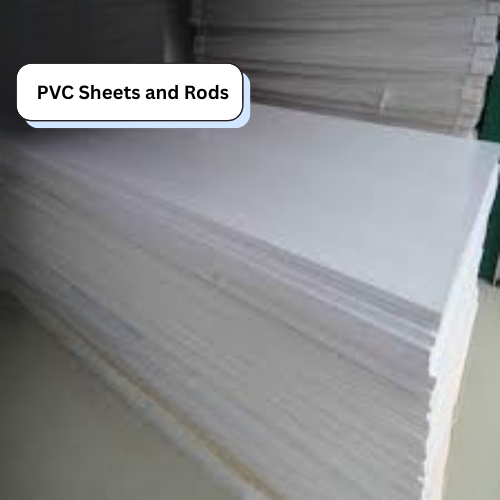What PVC Sheets and Rods
One of the most versatile plastics, PVC sheets and rods are widely used in engineering, construction, and industrial applications. Even in harsh climatic conditions, they provide dependable performance due to their sturdy character, chemical resistance, and ease of production. Whether used for structural components, machine parts, or lining applications, PVC products deliver strength and durability without adding unnecessary weight.
Available in a range of grades and sizes, these sheets and rods are ideal for fabricating tanks, protective barriers, insulation panels, and mechanical parts. Their excellent resistance to acids, alkalis, and corrosion makes them a favored choice for industrial facilities, laboratories, and chemical processing operations. PVC materials preserve surface integrity and dimensional stability over time by striking a compromise between hardness and flexibility.
Features of PVC Sheets & Rods
PVC sheets and rods are built to perform efficiently in industrial and environmental conditions that demand high durability and chemical stability.
- Durable and moisture resistant – Retains strength and rigidity even in humid or wet settings.
- Chemical and corrosion resistant – Ideally suited for chemical storage and processing environments.
- Easy to fabricate – Can be cut, drilled, welded, or machined with standard tools.
- Excellent electrical insulation – Commonly used in electrical cabinets and insulating components.
- Lightweight yet strong – Offers a good balance between strength and manageability for installation and transport.
- UV-resistant grades available – Extends service life for outdoor applications.
- Cost-effective and low maintenance – Provides a long-lasting solution with minimal upkeep requirements.
Applications
PVC sheets and rods are used extensively in many different industries because of their exceptional strength, resilience, and versatility. They are especially prized in the Middle East and the United Arab Emirates in environments where dependability and corrosion resistance are crucial. In the chemical sector, they provide excellent protection against strong chemicals by lining scrubbers, fume ducts, and tanks. In both commercial and residential projects, the building industry employs them for protective panels, wall cladding, and partitions. These materials are used in the water treatment and marine industries for pipes, valves, and structural supports that can tolerate extended exposure to moisture, as well as in the electrical and telecom sectors for protective housings, switchgear panels, and insulation plates.
PVC sheets and rods can be used for a variety of purposes outside of the industrial sector. They are used by makers of machinery and automobiles to make wear strips, spacers, and other parts that need to be strong under pressure. They are used in safe storage facilities, non-toxic handling systems, and sanitary wash areas in agriculture and food processing. They are also a popular option for signage and display work because of their smooth texture and print-friendly surface, which supports advertising and exhibition projects around the region.
How to Use?
Following proper usage methods ensures the best performance and safety of PVC sheets and rods:
- Choose the appropriate grade. Depending on the needs of the application, select rigid or semi-rigid PVC.
- Use the proper cutting equipment, such as routers with fine-blade teeth or circular saws, to cut precisely.
- In order to avoid bending or stress concentration, mount the device securely and evenly.
- To avoid deformation, keep cutting or welding temperatures within the advised ranges to avoid overheating.
- Before applying, ensure the surface is clean and free from gaps, dust, or oil.
- Keep the sheets flat in a cool, dry, and dark place to protect them from UV rays and prevent warping.
Safety Guidelines
- Wear safety goggles and gloves whenever you cut or fabricate PVC materials.
- To prevent fume inhalation, work in an area with enough ventilation when machining or welding.
- PVC is self-extinguishing, but if it burns, it can emit gasses, therefore keep it away from open flames.
- Never utilize sheets that are fractured or damaged for structural purposes.
- Steer clear of powerful chemicals that could harm the surface and instead use water and a gentle detergent.
- To avoid dropping or bending, handle large rods and heavy sheets in pairs or with mechanical support.




